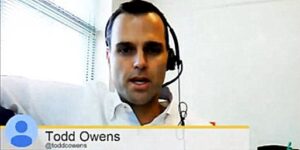Transparency: A Red Carpet Experience for Candidates
“Your Uber driver is named Pete. He’s driving a white Prius and will arrive in 3 minutes.” People aren’t happy about having to slog through
“Your Uber driver is named Pete. He’s driving a white Prius and will arrive in 3 minutes.” People aren’t happy about having to slog through
This week the TalentCulture team discussed why compliance is a complex HR necessity with Todd Owens, CEO of TalentWise. The ideal goal for HR in any organization is
TalentWise just wrapped up our best HR Tech conference yet. As I cruised the show floor, engaged with analysts and customers, and chatted with fellow
A smooth onboarding process can be the difference between retaining top level talent and pushing them away after just a few months at your company.
I’m frequently asked why TalentWise offers two seemingly different services—screening and onboarding —as one. What do they have to do with one another? My answer:

“How many times Do we chaff against the repetition Straining against the faith Measured out in coffee breaks…” —Neil Peart His smile ricocheted off the

Employers invest significant time and money to find the best candidate. However, too many companies are jeopardizing their investment by failing to unify the subsequent

We know that mobile tools are rapidly transforming recruitment. But what about the rest of the hiring process? #TChat talks about why employers need to get ahead of the curve

Mobile recruiting is revolutionizing HR. Now it’s time for mobile hiring to step in where the mobile candidate experience leaves off…

Mobile recruiting is on the rise. What about mobile hiring? The TalentCulture community talks with HR technology experts